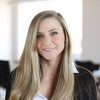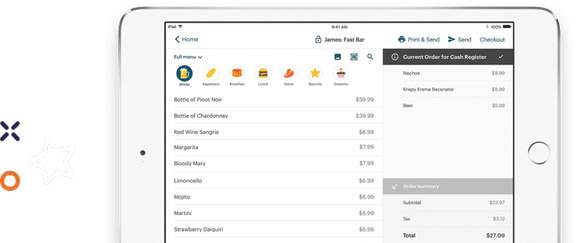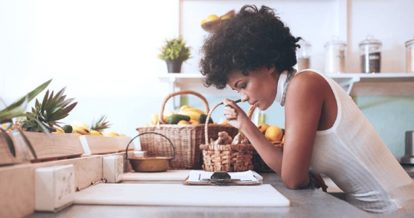Now, more than ever, restaurants are leaning into online ordering as a way to streamline takeout and delivery, and help their businesses recover from the impact of the pandemic. Many have scrambled to quickly put together their own restaurant online ordering systems, while others are relying on third-party apps like Uber Eats and DoorDash to bring in orders.
And for good reason. While takeout and delivery revenue tripled from 2014 to 2019 – reaching over $300 billion – one report is saying that to-go food orders are 300 times more popular than before the COVID-19 crisis began.
But with takeout being one of the most accessible ways for diners to access restaurant food right now – or maybe the way they feel most comfortable doing so for the time being – there’s a lot of pressure on restaurants to provide the right online ordering system, both for their customer experience and for their bottom line.
How do you balance fees with convenience? Volume with control?
Don’t worry. We’re here to help you navigate the ins and out of restaurant online ordering systems and show you just a few ways that a direct solution is critical to your business – now and in the future.
In this article, we’ll go over:
- The difference between direct online ordering and third-party apps
- The benefits of direct online ordering and third-party services
- 5 reasons why direct online ordering is so important right now
Whether you’re new to online ordering or have worked with a restaurant management system in the past, use this article as your go-to guide for making the right decisions for your restaurant.
Third-Party Online Ordering Apps vs. Direct Online Ordering
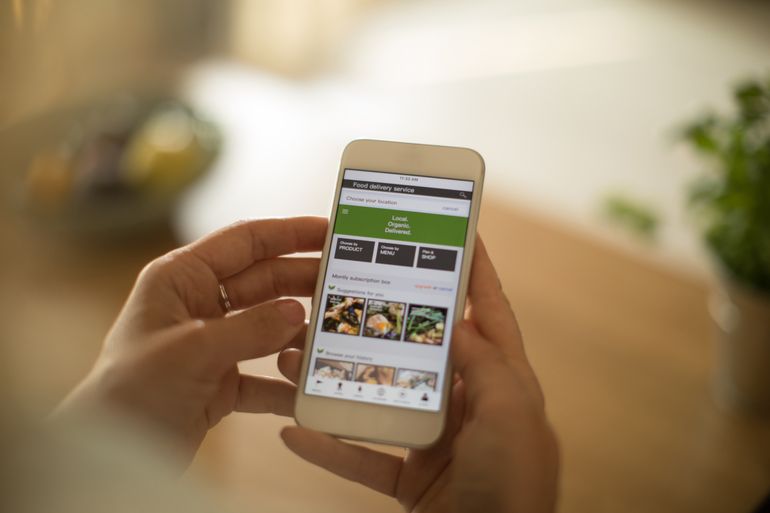
Okay, let’s start with the basics.
What’s the difference between third-party online ordering apps and direct online ordering?
While both make use of technology to let customers order takeout from mobile or desktop platforms, that’s pretty much where the similarities end.
Third-Party Online Ordering Apps
Third-party takeout and delivery apps – like Uber Eats, DoorDash, Foodora, Postmates, and Ritual – are aggregate platforms that provide hungry diners with a directory of restaurants open for takeout (delivery or pickup). Venues are often organized by location or food type to help customers explore and place orders.
Integrated payments on these platforms mean that you don’t have to validate or process customer payments. Everything is done through the app. Your restaurant receives an order, confirms it, enters the order into your POS, and gets the food and/or drink ready, to be picked up either by the customer or (more often) by a courier that works directly with the app.
You can work with just one app, or use as many as you like. Keep in mind though that each platform will come with its own tablet to manage orders. Someone on your team needs to monitor each tablet and enter incoming orders into your POS. If you don’t want a clutter of tablets on your counter, you can opt for an integrated aggregator, so orders from third-party apps get streamlined right into your point of sale.
As the restaurant owner, you don’t have to manage any of these platforms, payments, or drivers – the third-party apps take care of everything but the food and food packaging. You get the convenience and volume of a built-in restaurant delivery service with these apps, meaning 1) there’s less legwork to prepare for online ordering, and 2) there are more eyes on the platform that can discover your restaurant. And you get weekly (or sometimes daily) payouts based on your orders from the third-party app – minus their cut, of course.
And here is where we get into the biggest sticking point for third-party food delivery apps. Their fees. These apps have been known to charge anywhere from 10% to 30% of the total check to cover the costs of their couriers, platform, marketing, etc., and, well, to turn a profit.

But the question remains: If you aren’t relying on third-party apps, what are your options for takeout and delivery?
Direct Online Ordering
Enter direct online ordering.
A direct or in-house restaurant online ordering system is a solution that lives on your website and lets customers order takeout and delivery directly from you. TouchBistro Online Ordering is a perfect example of a direct online ordering system.
With TouchBistro Online Ordering, customers can explore your interactive online menu, then place an order for right now (or schedule one for later) directly on your restaurant’s website. You can include images and descriptions of your menu items, so guests know exactly what they’re ordering. It’s worth taking advantage of this TouchBistro Online Ordering feature to improve your guests’ experiences.
You can also set multiple delivery boundaries and fees. That means you could charge diners who live close by $5, and diners who live farther away $10, for example.
Plus, TouchBistro Online Ordering integrates with DoorDash Drive, making it easy for your restaurant to offer delivery. With this integration, you can tap into a network of on-demand local drivers for quick and convenient delivery and pay just one flat fee per delivery and $0 in commission. You can also strike a balance between happy customers and healthy margins by choosing to pass some or all of your delivery fees on to diners. For example, you can waive delivery fees if diners set a minimum amount on their order.
And it doesn’t stop there. If you’re using TouchBistro Online Ordering in conjunction with TouchBistro Loyalty, your diners enjoy the added benefit of earning and redeeming rewards when placing online orders
All of these orders then flow directly into your TouchBistro POS in real-time, with notifications for every new order that’s been placed so your team can get to work preparing the food and/or drinks. Not only does this help to keep your front of house and back of house teams in sync, but you also get to keep all of the revenue (though payment processing and delivery fees apply), which is one of the key factors in restaurants deciding to go this route. Restaurant owners like that they get to offer convenience to customers (who in turn will order more), while keeping the profits in their pockets.

Let your customers know how to order takeout and delivery from you.
But that’s not to say that third-party apps don’t have their place in the world of takeout and delivery. As we mentioned, because they have a large user base, these apps can be a good way for some restaurants to get exposure to new areas and demographics.
And many restaurants are using them as just that – a marketing tool to help get the word out about their offerings, before encouraging happy customers to return through our own direct online ordering system. In other words, signing up with the best food delivery app can actually be a solution to the question of how to market your restaurant.
Whether you want to continue using third-party apps for takeout and delivery, we recommend having an in-house online ordering system in place regardless. And here’s why.

5 Direct Online Ordering Benefits
The fees are a big part, as we mentioned. But that’s not the only advantage of an in-house online ordering system.
Here are five reasons why direct online ordering – versus third-party food delivery apps – is so important for restaurants right now.
1) Keep More of Your Profit
Because third-party food delivery apps mean there are more cooks in the kitchen (so to speak), there are more people who need to take a cut of your sales – like 10% to 30% of the check. Yikes.
But with direct online ordering software, there is no middleman. You get the technology you need to accept orders and you only pay for payment processing and delivery fees – all the rest of the profits stay in your pocket!
In 2021 alone, more than 633,000 orders were placed using TouchBistro Online Ordering, generating $29 million in revenue for restaurants – revenue that hasn’t been reduced by third-party app commissions.
The State of Full Service Restaurants in 2020 report found FSRs that implemented online ordering saw an impressive 11% to 20% increase in revenue, specifically because customers order more items and more add-ons to those items when they can do so online.
Based on our latest data, TouchBistro Online Ordering customers are seeing an average check size of $45. So now think about keeping that full $45, versus paying out up to $13.50 to your delivery app. Sounds ideal, right?
Direct online ordering systems help you make money and keep more of it in your pocket.
2) Use More of Your Own Team
When you bring your online ordering system in-house, you get a chance to cross-train your staff, keeping more of your team employed. You might even rehire back FOH staff as drivers or pickup coordinators to build the best food delivery service for your restaurant.
These additional roles will help you support your staff as your business starts to recover and keep morale up.
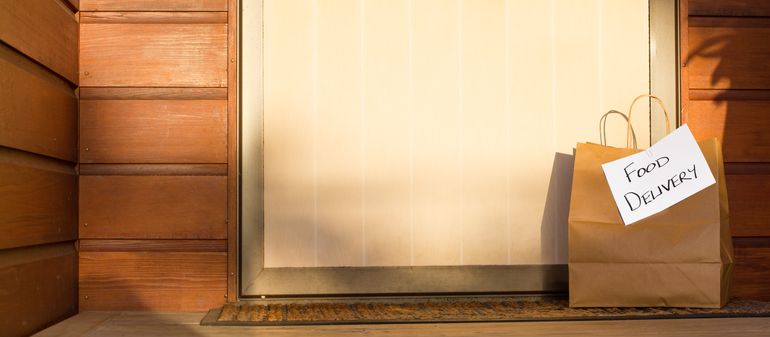
3) Improve the Customer Experience
Since you get to use more of your own staff with a direct restaurant online ordering system, you’ll be able to extend the reach of your brand into every engagement a customer has with the ordering process – from placement to payment, and last (contactless) handoff to first bite.
This is especially true if your loyalty program is integrated with your direct online ordering system. For instance, TouchBistro’s Online Ordering and Loyalty integration allows your customers to earn and redeem rewards when they order online directly from your website. This encourages customers to order from you again and again, which isn’t necessarily the case with third-party apps, which largely encourage customers to order from a wide variety of restaurants.
Not to mention, taking online orders in-house also helps promote quality control – something that third-party apps have been known to struggle with. Since your staff members are well trained and know your restaurant brand inside and out, they’ll help you better control the quality of the food and they can help maintain a positive and consistent customer experience, so new diners become regulars and regulars keep coming back.
4) Control Your Offers
Speaking of control…
Using a third-party for takeout often means you have no say over what promotions happen on the platform and how they could impact your business.
For example, Grubhub came under fire after launching a “Supper for Support” initiative. The deal was advertised as a way for diners to support their favorite local restaurants while receiving $10 off a meal that was over $30, meant to encourage people to place orders with small businesses. In theory, a great initiative.
However, the promotion’s fine print showed that restaurants were the ones taking the $10 hit – even though Grubhub was behind the offer. While diners were quick to call Grubhub out for this less-than-acceptable practice, you never have this risk with direct online ordering.
A direct system like TouchBistro Online Ordering lets you decide what special offers, promotions, or reeward happen and when. You can easily adjust your menu, add family deals, exclusive promotions based on what makes sense for your day-to-day operations and your overall business.
5) Reduce Order Errors
Another direct online ordering benefit is fewer order errors – especially if your system is integrated right into your POS. There’s no manual entry from a third-party tablet into your POS; you simply receive a notification when a new order has been placed.
While aggregators can streamline third-party orders into your POS system (for a fee), a direct online ordering system has the advantage of already being synced to your POS menu, so you only have to make menu updates in one place. That means never having to contact an outside vendor to make changes to your menu items, prices, hours of operation, and more.
If an item is 86’d on your POS menu, then customers can’t order it online. If a price has been changed in your POS, then customers will see and pay for that updated cost. And if you want to give customers the option to schedule orders for hours or even days in advance, you can control that too.
Overall, a direct restaurant online ordering system gives you access to more profit and more control, two aspects that are critical for the success of restaurants in the current climate.

Let your customers know how to order takeout and delivery from you.

